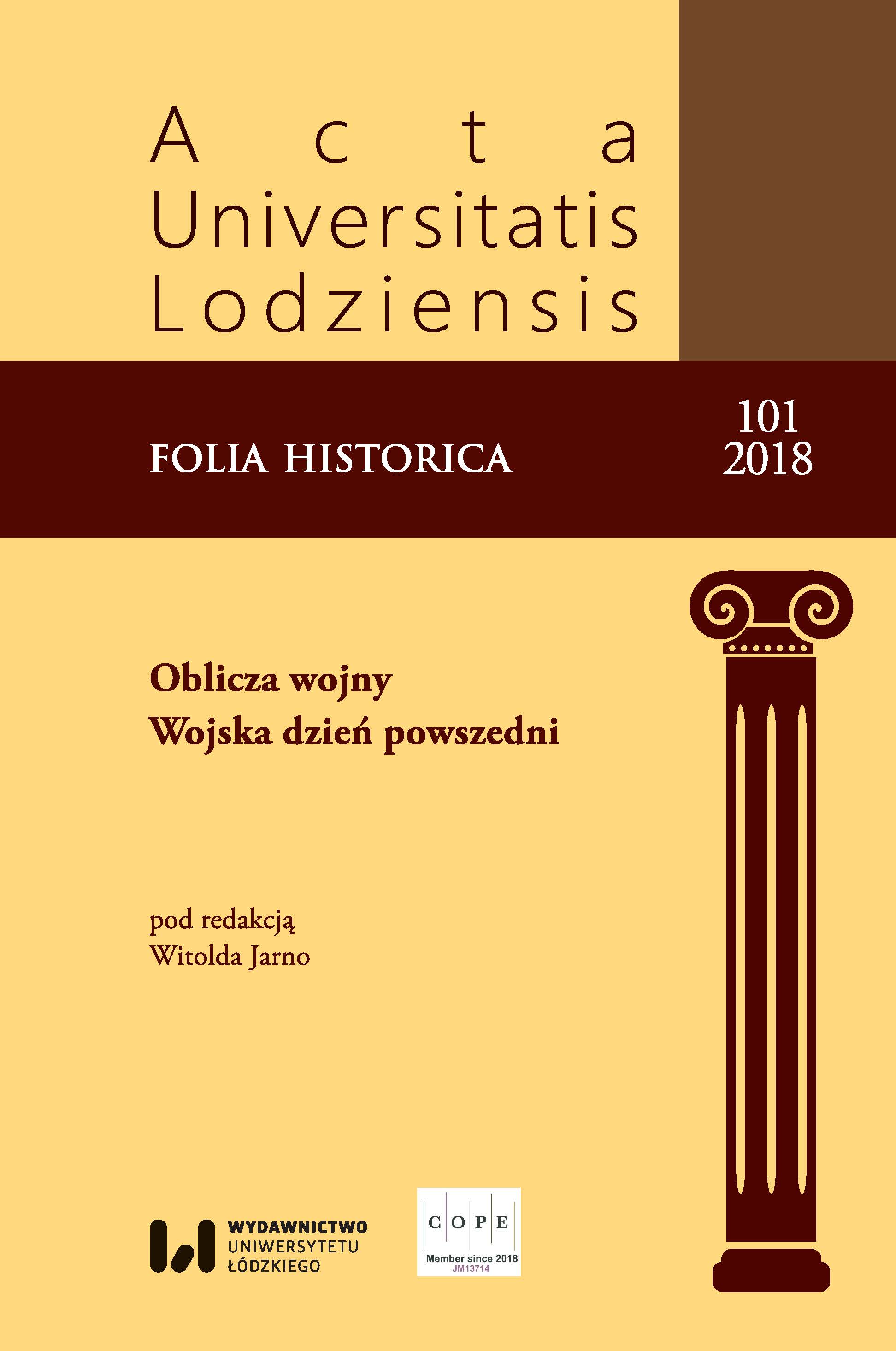Kwatermistrzowskie zabezpieczenie oraz materiałowo-techniczne zaopatrzenie oddziałów polskich na Syberii (1918–1920)
DOI:
https://doi.org/10.18778/0208-6050.101.08Słowa kluczowe:
wojna domowa w Rosji, Polacy na Syberii, bolszewicy, 5 Dywizja Strzelców Polskich, zaopatrzenie i uzbrojenieAbstrakt
Latem 1918 r. w czasie walk toczonych na Powołżu i Syberii przez oddziały Korpusu Czechosłowackiego i „białych” Rosjan z bolszewikami zostały tam utworzone polskie formacje zbrojne. W październiku 1918 r. miejscem stałej dyslokacji wojsk polskich stał się Nowonikołajewsk nad rzeką Ob. Na przełomie 1918 i 1919 r. zdołano sformować oddział w sile dywizji. Pod koniec 1918 r. w początkowym okresie formowania oddziałów wojska polskiego, zaopatrzenie w prowiant, furaż i umundurowanie zgodnie z zawartym porozumieniem z Filią Czesko-Słowackiej Rady Narodowej (FCz-SRN) odbywało się za pośrednictwem komórki kwatermistrzowskiej Korpusu Czechosłowackiego. W celu usprawnienia rozdziału przekazywanych dla wojsk polskich materiałów zaopatrzeniowych zorganizowano przy Dowództwie Wojsk Polskich we wschodniej Rosji polską służbę kwatermistrzowską. Założono składy żywności i materiałowe, warsztaty krawieckie, szewskie, wydzierżawiono też piekarnię parową. Odrębnym problemem było stworzenie od podstaw służby zdrowia.
W czerwcu 1919 r. polskie oddziały wzięły udział w walkach w obronie magistrali transsyberyjskiej. Wobec stale pogarszającej się sytuacji wojska sprzymierzonych rozpoczęły ewakuację na wschód, 5 Dywizja Strzelców Polskich (DSP) otrzymała rolę straży tylnej. Największą bitwę z regularnymi bolszewickimi oddziałami dywizja ta stoczyła 23 grudnia 1919 r. o węzłową stację Tajga. 10 stycznia 1920 r. dowództwo polskie wbrew opinii części oficerów zdecydowało o kapitulacji oddziałów polskich.
Część oficerów i żołnierzy, która nie pogodziła się z kapitulacją, przebiła się do Harbinu. Z ocalałych żołnierzy sformowano tu batalion. Dzięki staraniom Polskiej Wojskowej Misji z gen. Antonim Baranowskim na czele, która w lutym 1920 r. przybyła z Polski na Daleki Wschód, zorganizowano powrót batalionu do kraju na statku „Yaroslavl”.
Pobrania
Bibliografia
Archiwum Akt Nowych w Warszawie [AAN], Komitet Narodowy Polski, Zbiory Instytutu Józefa Piłsudskiego w Nowym Jorku, Akta Adiutantury Generalnej Naczelnego Wodza [zmikrofilmowane].
Google Scholar
Centralne Archiwum Wojskowe w Warszawie [CAW], Oddział II Sztabu MSWojsk.
Google Scholar
Centralne Archiwum Wojskowe w Warszawie [CAW], Polska Misja Wojskowa na Syberii (mjr. Okulicza-Kozaryna).
Google Scholar
Centralne Archiwum Wojskowe w Warszawie [CAW], Wojsko Polskie na Syberii.
Google Scholar
Centralne Archiwum Wojskowe w Warszawie [CAW], Wspomnienia i Relacje.
Google Scholar
Bohdanowicz S., Ochotnik, Warszawa 2006.
Google Scholar
Hera E., Z biegiem lat, z biegiem wydarzeń…, Chotomów 1992.
Google Scholar
Z ziemi rosyjskiej do Polski. Generał Jan A. Medwadowski w swoich wspomnieniach, red. D. Radziwiłłowicz, Olsztyn 2013.
Google Scholar
„Wiadomości Wojskowe” 1918, nr 21–22 (62).
Google Scholar
Armia polska na Syberii, „Głos Narodu” 1919, nr 183, s. 3–4.
Google Scholar
Bagiński H., Wojsko Polskie na Wschodzie 1914–1920, Warszawa 1990.
Google Scholar
Encyklopedia Techniki Wojskowej, Warszawa 1978.
Google Scholar
Juzwenko A., Polska a „biała Rosja” (od listopada 1918 do kwietnia 1920 r.), Wrocław–Warszawa–Kraków–Gdańsk 1973.
Google Scholar
Kozłowski W., Artyleria polskich formacji wojskowych podczas I wojny światowej, Łódź 1993.
Google Scholar
Radziwiłłowicz D., Błękitna Armia. W 80 rocznicę utworzenia, Warszawa 1997.
Google Scholar
Radziwiłłowicz D., Organizacja, plany rozwoju artylerii polskich formacji zbrojnych na Syberii w 1919 roku, [w:] Artyleria polska. Historia – teraźniejszość – przyszłość, myśl wojskowa, szkolnictwo artyleryjskie, technika i uzbrojenie. (Materiały pokonferencyjne), Toruń 2007, s. 117–132.
Google Scholar
Radziwiłłowicz D., Polskie formacje zbrojne we wschodniej Rosji oraz na Syberii i Dalekim Wschodzie w latach 1918–1920, Olsztyn 2009.
Google Scholar
Rosnowski M., Służba zdrowia wojsk polskich we Wschodniej Rosji, Warszawa 1936.
Google Scholar
Wielecki H., Polski mundur wojskowy 1918–1939, Warszawa, 1995.
Google Scholar
Pobrania
Opublikowane
Jak cytować
Numer
Dział
Licencja

Utwór dostępny jest na licencji Creative Commons Uznanie autorstwa – Użycie niekomercyjne – Bez utworów zależnych 4.0 Międzynarodowe.











